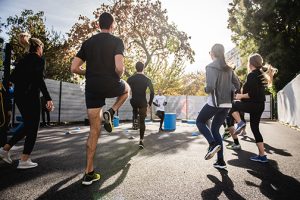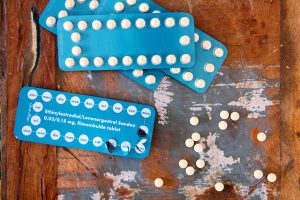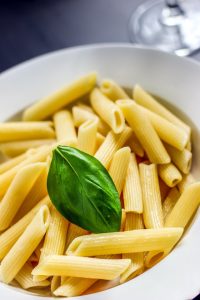Top Yoga Poses For Stress Relief
 If you feel like your day is out of control and you need some stress relief, consider doing yoga. Yoga offers many benefits. You can use it any time of day and help reduce the tension in your body. Yoga relieves stress in several ways. Controlled breathing can slow your heart rate and lower blood pressure. It reduces the impact of your stress mechanism and your body’s reaction to stress and calms your mind. It stretches the muscles and helps them relax.
If you feel like your day is out of control and you need some stress relief, consider doing yoga. Yoga offers many benefits. You can use it any time of day and help reduce the tension in your body. Yoga relieves stress in several ways. Controlled breathing can slow your heart rate and lower blood pressure. It reduces the impact of your stress mechanism and your body’s reaction to stress and calms your mind. It stretches the muscles and helps them relax.
The child pose is simple and well worth the effort for stress relief.
Start with your weight resting on the palms of your hands and knees with the front of your legs touching the floor. As you exhale, lower your bottom until it touches your heels. Extend your arms until your chest touches your thighs, your forehead is on the ground, and your arms are stretched out in front. Hold this pose until you feel the stress melt away.
Do part of a combination or the whole thing to relieve stress.
Two poses that bring stress relief are the cat pose and the cow pose. Combine them to relieve stress and back pain. The cat pose starts on your hands and knees. You move your head down as you arch your back like an angry cat. Hold for a few seconds and then release. The cow position starts on the hands and knees, too. Instead of lowering your head, you raise your head, dropping your belly instead of arching your back. Doing the two together almost massages your back.
Doing a cobra pose can bring stress relief.
A cobra pose starts by laying on the stomach with the tops of the feet on the floor. Your hands are under your shoulders and your arms are close to your body. Your elbow is bent with your fingers pointing forward. As you press your lower body from the ribs down onto the floor, you push your upper body up with your hands, exhaling as you do it. Straighten your arms and hold for 30 seconds.
- Three-part breathing can calm you. Breathe in through the nose, filling your lungs first then your belly. Have one hand on your chest and the other on your belly. Feel the belly grow smaller as you exhale, then empty the lungs.
- Many traditional bodyweight exercises are also yoga poses. Do a bridge or plank to bring stress relief as it builds core muscles. Both are yoga poses. When you end the pose, you’ll feel your body relax.
- The uttanasana is an intense toe-touching style exercise. You need to warm your muscles first, so it should be at the end of the poses. You bend at the waist and touch the floor palms down. Bend as far as you comfortably can.
- The legs-up-the-wall pose starts seated with your body close to the wall. Lay your upper body back and put your legs on the wall with your knees straight. Scoot your bottom as close to the wall with one hand on your belly and the other on your chest. Hold for up to 15 minutes.
For more information, contact us today at Rising Fitness Gym



 When you want to lose the most weight and get the best results from every minute in the gym, search for HIIT—high intensity interval training—workouts that burn the most calories. If you’re like most people in Houston, TX, finding that type of workout fits many goals. HIIT workouts aren’t a specific workout but a way of doing any workout. They alternate intensity between high intensity and recovery. HIIT workouts build endurance faster besides burning calories.
When you want to lose the most weight and get the best results from every minute in the gym, search for HIIT—high intensity interval training—workouts that burn the most calories. If you’re like most people in Houston, TX, finding that type of workout fits many goals. HIIT workouts aren’t a specific workout but a way of doing any workout. They alternate intensity between high intensity and recovery. HIIT workouts build endurance faster besides burning calories.
 It’s normal to want to maximize the benefits of any workout, especially when it’s cardio. Many cardio activities can require a longer workout. Running, walking, and riding a bike riding a bike are examples of a few that require more time to get the maximum benefit. That is, unless you use a HIIT—high intensity interval training—technique. There are other ways to max out your cardio and get more from every minute in the gym.
It’s normal to want to maximize the benefits of any workout, especially when it’s cardio. Many cardio activities can require a longer workout. Running, walking, and riding a bike riding a bike are examples of a few that require more time to get the maximum benefit. That is, unless you use a HIIT—high intensity interval training—technique. There are other ways to max out your cardio and get more from every minute in the gym.
 People of all fitness levels in Houston, TX, need to do warm up exercises before starting any workout and cool down exercises before the session ends. What’s so important about these five-minute sessions? They can protect your body and help with recovery. Most people want to get started quickly and leave the gym just as quickly. People often feel warm up and cool down exercises aren’t necessary until that fateful day when they experience an injury because they didn’t.
People of all fitness levels in Houston, TX, need to do warm up exercises before starting any workout and cool down exercises before the session ends. What’s so important about these five-minute sessions? They can protect your body and help with recovery. Most people want to get started quickly and leave the gym just as quickly. People often feel warm up and cool down exercises aren’t necessary until that fateful day when they experience an injury because they didn’t.
 How many times have you vowed to start working out and decide you’ll join a gym the next day, but you don’t? It may be a lack of confidence or fear of working out that’s causing gym anxiety and stopping you in your tracks. Many people fear being judged by others, especially if they aren’t in shape or overweight. Perfectionists also fear going to the gym. They fear they won’t be able to do each exercise perfectly. All of this can cause anxiety and stop you from becoming a healthier, fitter version of yourself.
How many times have you vowed to start working out and decide you’ll join a gym the next day, but you don’t? It may be a lack of confidence or fear of working out that’s causing gym anxiety and stopping you in your tracks. Many people fear being judged by others, especially if they aren’t in shape or overweight. Perfectionists also fear going to the gym. They fear they won’t be able to do each exercise perfectly. All of this can cause anxiety and stop you from becoming a healthier, fitter version of yourself.
 If you’re frustrated because you can’t seem to lose weight, even though you believe you’re doing everything right, your hormones might be interfering with your weight loss. In many cases, people simply don’t realize how much they’ve eaten, which is why an exercise and food diary is so important. In some cases, however, the problem can come from hormonal imbalances. You can realign most imbalances naturally to help weight loss begin again.
If you’re frustrated because you can’t seem to lose weight, even though you believe you’re doing everything right, your hormones might be interfering with your weight loss. In many cases, people simply don’t realize how much they’ve eaten, which is why an exercise and food diary is so important. In some cases, however, the problem can come from hormonal imbalances. You can realign most imbalances naturally to help weight loss begin again.
 If you haven’t heard about Himalayan salt, it’s the pink salt that many believe is healthier than table salt. It comes from an area near the Himalayas that’s in Pakistan. The color is natural due to minerals it contains that were deposited millions of years ago. The additional minerals are also why people think it’s healthier than regular table salt. Unfortunately, there’s not much evidence backing that belief or opposing it. Are there enough minerals? Is it worth the effort and extra price?
If you haven’t heard about Himalayan salt, it’s the pink salt that many believe is healthier than table salt. It comes from an area near the Himalayas that’s in Pakistan. The color is natural due to minerals it contains that were deposited millions of years ago. The additional minerals are also why people think it’s healthier than regular table salt. Unfortunately, there’s not much evidence backing that belief or opposing it. Are there enough minerals? Is it worth the effort and extra price?
 There are so many different diets people in Houston, TX, recommend that it’s difficult to find one that’s best for you. One popular diet is the Keto or extremely low carbohydrate diet that puts your body into a state of ketosis. Other lower carbohydrate diets aren’t as drastic and allow the individual to include more carbohydrates in meals. Which one is the best? How many carbs should you have daily? There is no one correct answer. It’s all about individual needs.
There are so many different diets people in Houston, TX, recommend that it’s difficult to find one that’s best for you. One popular diet is the Keto or extremely low carbohydrate diet that puts your body into a state of ketosis. Other lower carbohydrate diets aren’t as drastic and allow the individual to include more carbohydrates in meals. Which one is the best? How many carbs should you have daily? There is no one correct answer. It’s all about individual needs.
 If you have joint issues, running can create more problems than the benefits it provides. That’s because it’s a high-impact exercise. Just like jumping, both feet are off the ground at one time, and land with a jarring thud to the joints. How do you avoid exacerbating joint issues or other problems that are affected by jarring the body? Choose cardio workouts with no jumping. Many of these are fun to do. Many forms of dancing involve no jumping, yet they provide a superior cardio workout. Think of the dances of the 60s and 70s like the Twist. It will get your heart pumping, and your feet will never leave the floor.
If you have joint issues, running can create more problems than the benefits it provides. That’s because it’s a high-impact exercise. Just like jumping, both feet are off the ground at one time, and land with a jarring thud to the joints. How do you avoid exacerbating joint issues or other problems that are affected by jarring the body? Choose cardio workouts with no jumping. Many of these are fun to do. Many forms of dancing involve no jumping, yet they provide a superior cardio workout. Think of the dances of the 60s and 70s like the Twist. It will get your heart pumping, and your feet will never leave the floor.